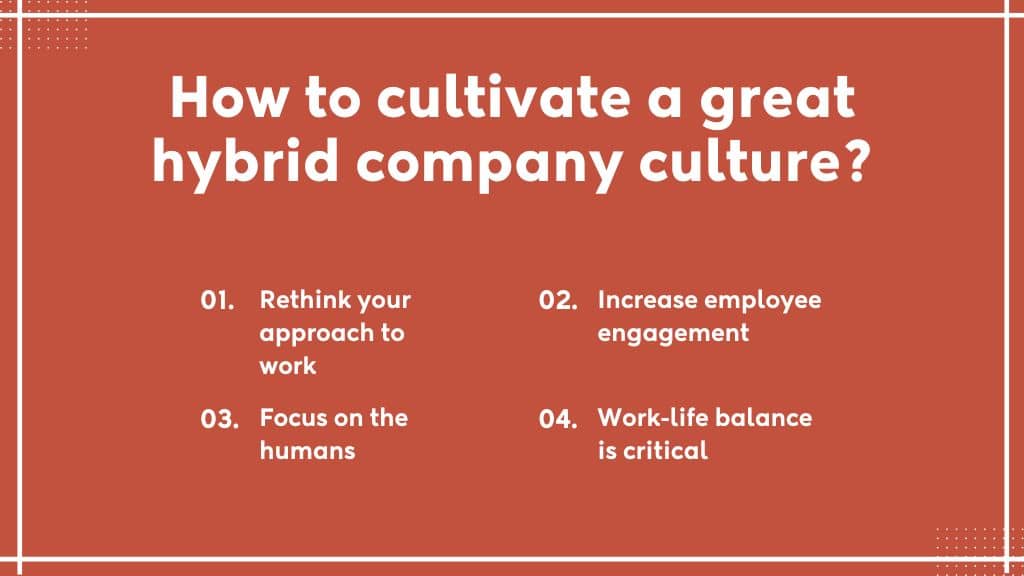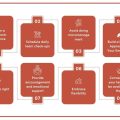Introduction
The hybrid workplace is here to stay.
No doubt, this smooth blend of remote and in-office collaboration was just like reading the air once.
However, it has now become commonplace.
As of 2023, 28.2% of companies operate and thrive in a hybrid setup. And that’s just not it. 80% of companies are planning to adopt this flexible style in the near future.
With all this hype, the hybrid model’s ascent to become the dominant operational framework is undeniable now.
But before fully committing, let’s just dig into the hybrid model examples and types. Along with finding out the ways to bring a hybrid change to your company’s operating systems.
What is hybrid work?
Hybrid work is a flexible approach to work arrangement and style. It is a unique blend of both in-office and work-from-home, bringing the best of both worlds. It offers employees the flexibility to work from different locations – home, office, on-the-go, or wherever they feel more productive and engaged.
The major factor differentiating hybrid work from other working styles is its ability to accommodate various working schedules. On one hand, it promotes a greater work-life balance compared to being in a four-walled corporate setup, it also eliminates the loneliness and isolation that remote workers may experience.
While it may have different implementations in different organizations, the essence is the same. Here employees are required to be onsite present for a certain number of days or different times as required. This approach brings working professionals much-needed balance and comfort.
Hybrid work models
Different ways you can make the hybrid model work for you are:
- Fixed schedule model
In a fixed schedule model, the organization predefines the days employees can work remotely and in the office. For example, an organization may select a few employees to come to the office while others work remotely and vice versa. Or they could allow teams to work from home on pre-determined days either rotationally or on the same days.
- Office-centric hybrid model
The office-centric hybrid model prioritizes on-site presence, but employees can choose to work from home on limited days. It can both be optional or obligatory. For example, they have a set .., like working mandatory three days from office and other two days away from work.
- Remote-first hybrid model
The emphasized mode of working in this model is working from the comfort of home. However, they can make occasional visits to the office for collaborative activities, like meetings, conferences, training, and workshops. This could even be combined with an activity-based model where employees come in for specific tasks.
Gain insights into remote project management to keep leading effectively from a distance
- Flexible hybrid model
In this hybrid model, employees can choose not only the location but working hours too based on individual preferences and requirements. It could be a combination of both in-office and remote work with varying working schedules.
Example of hybrid Work
Here are a few of the global companies examples that have opted for a hybrid work culture in their organization:
- Unilever
Unilever is a prominent name when it comes to incorporating flexible work practices. They reimagined their office spaces in 2021 by limiting their office time for collaborating and connecting to 40%. The company envisions creating a more flexible environment that suits its business and employees.
- Airbnb
Airbnb is another name on the list that is promoting hybrid work adoption in their schedule. Their Live and Work Anywhere program encourages employees to thrive in a collaborative environment. A Few words from Airbnb co-founder and CEO Brian Chesky’s email –
“Now, I understand the anxiety of not seeing people in an office—how do you know if your employees are doing their jobs when you can’t see them? For me, it’s simple: I trust you, and flexibility only works when you trust the people on your team. “
Google also changed its stance on remote work by adopting a hybrid approach to work on-site for three days. According to a Google company notice, employees working in a completely remote environment were encouraged to shift to a hybrid approach. And all that was done to improve in-person collaboration and productivity.
Here is a section from the notice,
“For those who are remote and who live near a Google office, we hope you’ll consider switching to a hybrid work schedule. Our offices are where you’ll be most connected to Google’s community. ”
Hybrid vs. Work From Home (WFH)
A hybrid work schedule and working-from-home arrangements are different from each other.
A hybrid model offers a mix of both remote and in-office work to employees. Depending on the different hybrid models discussed above, employees have the flexibility to choose their work locations and schedules accordingly.
Alternatively, WFH primarily means working from the comfort of home with limited or no office time. However, in WFH setups, employees might be required to visit the office once or twice in a while.
Where hybrid working style eliminates the drawbacks of a remote working setup, like isolation, homely distractions, and communication barriers. Remote work majorly cuts down commuting time and costs.
However, despite the remote work benefits, 52% of remote-capable employees prefer to work in a hybrid work arrangement. And there is no doubt why.
How to cultivate a great hybrid company culture?

With the rise of hybrid work, organizations’ culture has undergone a noticeable shift. It’s not about office amenities and team-building activities anymore.
That’s why businesses are finding ways to maintain culture with a partially or entirely remote staff.
So let us take a closer look at how we can adapt a company’s culture to a hybrid model of work:
1. Rethink your approach to work
First thing first, identify your unique perspective on the idea of work itself. Start by curating, distilling, and considering the characteristics of what an ideal work culture looks like to you. Also, ask yourself how you would achieve that in real life.
When it comes to implementing a hybrid workplace model, prioritize flexibility and trust in your employees. These two aspects act as the pillars on which your new company culture’s framework will be built with the qualities of transparency & strategic autonomy.
Allow them to work according to their unique circumstances and trust in their abilities to achieve work expectations. Also, do not forget to empower your remote/hybrid employees and make them feel valued for their contributions to the company’s success.
2. Increase employee engagement
Coworkers play a crucial part in the overall fulfillment and experience of an employee. When given a collaborative work environment, they become more energized and productive to go above and beyond the call of duty. Naturally, this impacts their mental health at work and those around them.
Employee engagement enhances company culture, lowers turnover, boosts productivity, improves work and customer connections, and has a financial impact. Employee engagement is also a great way to make your employees your strongest advocates.
Discover the actionable strategies to keep your team engaged in scattered environments
3. Focus on the humans
A great company culture is not made up of hollow words and principles, it is made up of people. So taking individuals who are making things happen for granted is the last thing you would like to do. Take into consideration their needs and ensure they have all that they need to be highly productive at work. So, how do you go about doing that? Simple –
- Provisioning employees with the tools, resources, equipment, training, and career development initiatives regardless of their location.
- By scheduling regular check-in sessions to foster a sense of connection and belongingness.
- Ensuring that remote supervisors are trained in remote supervision, management, coaching, and remote team-building abilities.
- Providing enough opportunities for your hybrid and work-from-home staff to interact with management.
Foster a healthier, happier, and more productive culture by employing an employee wellness program in your organization
4. Work-life balance is critical
Employees with a poor work-life balance use a lot of energy being stressed out. They feel torn between work and personal obligations and are constantly in a sink-or-swim state.
Taking a pulse poll to assess engagement levels might reveal problems caused by too much work, little time to recover, and insufficient acknowledgment from management.
Consider someone who arrives at work with a bad attitude because something in their home life is out of whack. If they spend most of their day brooding about it, this negative attitude will not help them be effective at work. So, provide them with flexible work schedules, promote time management skills, and foster a supportive culture to help them achieve holistic harmony.
Learn the essential elements to cultivate a culture of greatness in your organization in 2024
The future of work: Is hybrid here to stay?
Hybrid work isn’t a novelty anymore but has now become an integrated part of many organizations. And with so many organizations sailing the hybrid waters, the momentum of its adoption becomes even stronger.
It is helping employers expand their talent pool while giving them the flexibility to work remotely. Its impact and role in the future of work are undeniable, but be mindful that the landscape is still evolving. And we can expect some drastic changes along the way.
Keep reading and discover more blog posts covering topics like leadership, team management, remote work, and more.




















No Comments